Robotics
The latest news and reporting on robotics, from cutting-edge research to robovacs.
Latest
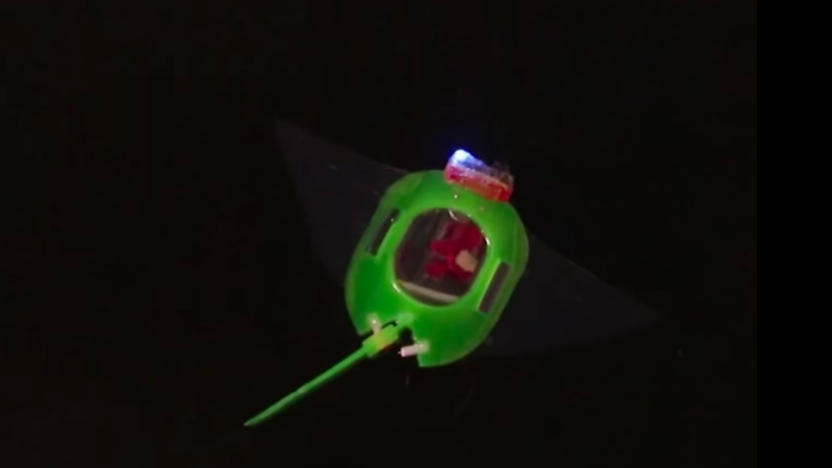
Soft manta ray robot could watch over coral reefs
It looks like Harvard's octopus robot is going to have some stiff competition. Chinese researchers have crafted a soft manta ray-inspired bot that could surveil the seas without harming nature in the process. Rather than rely on stiff metal or plastic for its body, the artificial swimmer is made out of a combination of flexible polymer (for its muscles) and silicone (for most everything else) that shouldn't damage sea life. And importantly, there's no motor -- the ray gets around using a lithium battery whose cyclic voltage causes the muscles to bend, flapping fins in the process. Electromagnets help steer the tail.

Vote for Engadget R+D's 'Superhumans' series to win a Webby Award!
Engadget R+D's first documentary Superhumans debuted back in September and now the series is up for a Webby Award. The look inside the first cyborg games is nominated for a People's Voice award in the Technology Film & Video category, but we need your help. Head over to the voting page between now and Thursday, April 20th to cast your vote for us. We would certainly appreciate it! It's not the first time we've been up for the prestigious award, but we would like to add some more hardware to our mantle. If you need a refresher on the series, you can re-watch every episode at the show hub right here.
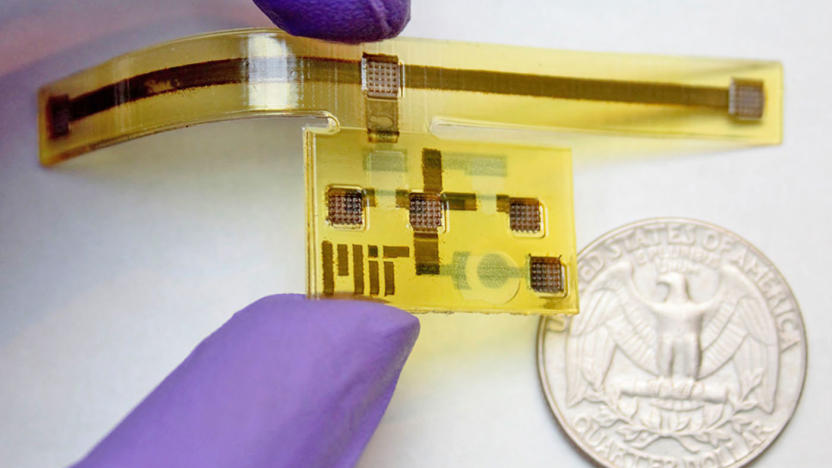
MIT creates 3D-printed robot inspired by the goldbug beetle
Someday, robots, planes, cars and other machines might have sensors all over their bodies, turning them into a huge touchscreen that recognizes your input. For that to happen, though, scientists have to develop sensor-rich robotic skin that can react to its environment, is affordable and is easy to make. That's what a group of MIT researchers want to achieve and the reason why they developed a device inspired by the golden tortoise beetle, an insect that changes color when poked.

Artificial skin with solar cells could power prosthetics
Researchers at Glasgow University have successfully developed a new type of artificial skin that is more sensitive than our own. Made of just a single atomic layer of graphene, the new soft feeling epidermis functions as its own sophisticated touch sensor. If that wasn't impressive enough, this artificial 'skin' is also entirely self-powered. Housing a solar panel hidden under its graphene layer, the material manages to absorb over 98 percent of the light available, relying only on the sun to power it.
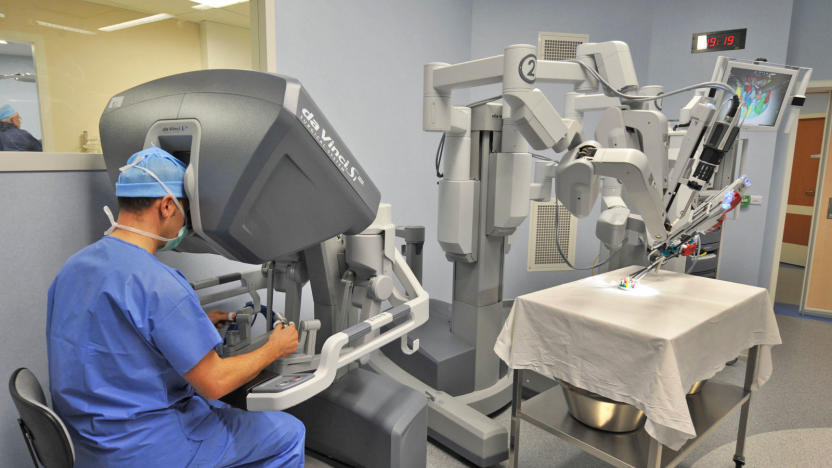
Scientists want to define just how smart robot surgeons are
For roughly three decades, medical robots have assisted surgeons in the operating theater. They provide a steady hand and can make tiny incisions with pinpoint accuracy. But as robotics improve, a new question has emerged: How should autonomous robots be treated? The US Food and Drug Administration (FDA) approves medical devices, while medical societies monitor doctors. A robot that can operate on its own falls somewhere in between. To help, Science Robotics has produced a scale for grading autonomy in robot-assisted surgery. If adopted, it could help regulators decide when and how machines should be treated like humans.

What the Spring 2017 Budget means for UK tech
The UK's chancellor Philip Hammond has provided more details today on the National Productivity Investment Fund (NPIF), a project unveiled at last November's Autumn Statement to support science and technology. The headline announcement is the Industrial Strategy Challenge Fund (ISCF), which falls under the NPIF and will be used to support electric vehicles, artificial intelligence and robotics. An "initial investment" of £270 million will be spent in 2017/18 to support what is being called "disruptive technologies." These include "the development, design and manufacture of batteries that will power the next generation of electric vehicles."
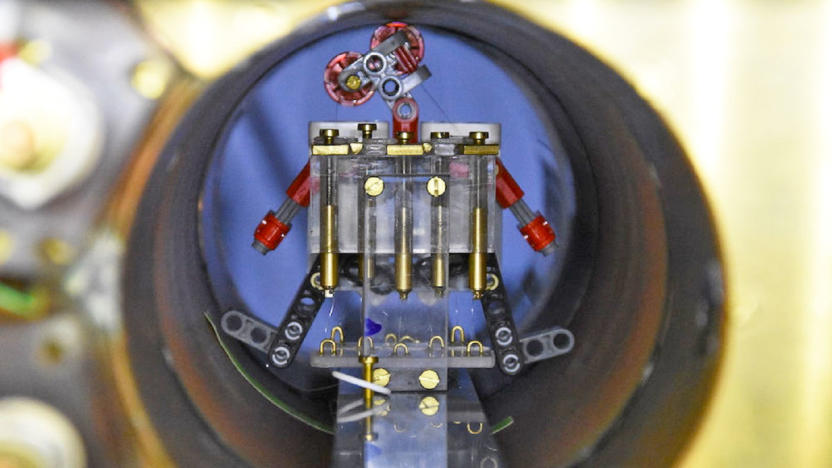
Scientists are building an army of tiny cancer-fighting robots
Scientists have worked for years to incorporate robotics into delicate medical procedures. They've given us tiny devices that can inject drugs into a person's eye or bend to operate on hard-to-reach areas. Now, they've come up with a way to potentially fight cancer using a magnetized swarm of microscopic robots.

3Doodler's new kits help kids craft their own robots
It used to be that if you gave a 3Doodler Start to a child, you'd have to throw them some stencils or otherwise pray they were creative enough to make something neat. Not so anymore. Eager to empower a new generation of Boston Dynamics engineers, 3Doodler is releasing a new robotics kit that lets kids — what else? — create their own moving machines out of melted plastic and sheer moxie.
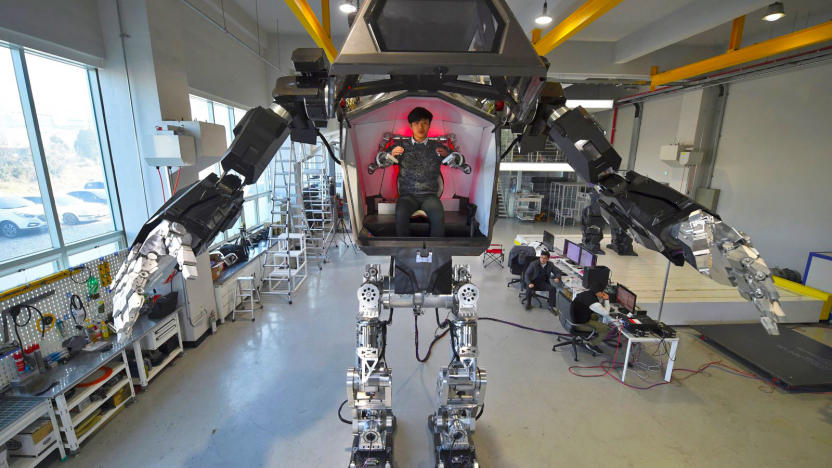
A South Korean robotics company just built a real Gundam
We won't have to wait much longer for our Robotech future. South Korean robotics manufacturer Hankook Mirae Technology debuted its first prototype piloted mech over the weekend. Say hello to the Method-2.

Watch ASUS' adorable robot butcher a Christmas classic
ASUS held an event in Taiwan today announcing the availability of its Zenbo robot. From January 1st, customers in the country will be able to pick up one for between $620 and $780, depending on configuration. Engadget Chinese editor-in-chief Richard Lai wrote many words in his dispatch from the launch, including some that detail new features coming to Zenbo. You should read those if you want to know more about it, but I have more important things on my mind. At the robot's launch event in Taiwan, Asus decided it was apt to ring in the holiday season by getting a choir of Zenbos to perform Mariah Carey's Christmas classic, "All I Want For Christmas Is You."

ICYMI: Hairy robots are better than smooth
try{document.getElementById("aol-cms-player-1").style.display="none";}catch(e){}Today on In Case You Missed It: Roboticists from China created an artificial skin for robots that simulate hair with glass-shrouded microwires. A gripper hand with the 'hair' on it's skin was able to feel when an object was slipping because of the hair, then adjust its grip. Lets just hope they keep the full Teenwolf under control. The helium-filled balloon bot designed for search and inspection jobs is here. Meanwhile NASA is spending its final days of 2016 by releasing data visualizations of carbon dioxide pollution around the globe, and how extra heat is stored in the world's oceans. The Chuck E. Cheese challenge video is here and that awkward handshake, here. As always, please share any interesting tech or science videos you find by using the #ICYMI hashtag on Twitter for @mskerryd.

Design your dream drone with MIT's program
Most of today's commercially available drones have four rotors and more or less look the same (other than that one that's foldable). So if you wanted to own a drone that had, say, five copters or a completely different design altogether, you'd probably have to make your own, which can be a really tedious process. If you don't know where to start customizing your flying masterpiece, MIT's new system could be your first stop. The institute's Computer Science and Artificial Intelligence Laboratory (CSAIL)'s latest project is what it says is the first platform that lets you design, simulate and build your own drone.

ICYMI: The balloon bot that can actually stand upright
try{document.getElementById("aol-cms-player-1").style.display="none";}catch(e){}Today on In Case You Missed It: A scientist at UCLA's Robotics & Mechanisms Laboratory is experimenting with a way to get around the fact that robots have a difficult time maintaining a high center of gravity, aka they always fall down; so he's built something that looks like a balloon on stick insect legs. It's still very much a prototype but perhaps the idea will remain in future walking bots. Meanwhile, scientists at SLAC came up with a way to spot photosynthesis at room temperature, using an X-ray laser. Previous tests had always relied on freezing leaves to track it. If you're getting your projects in order for the coming weekend, we recommend the DIY fire tornado. If you're looking for the Rubix Cube solving bot, that's here. As always, please share any interesting tech or science videos you find by using the #ICYMI hashtag on Twitter for @mskerryd.

The first Cybathlon pushed the limits of bionic technology
Andre van Rüschen slowly climbed a five-step ramp at the end of his race. With a black processor strapped to his back and leg supports on either side of his lower limbs, he stayed focused on the body-machine coordination that was keeping him upright. He had walked over a wooden slope, criss-crossed bright yellow bars and tried to step on gray discs that were placed irregularly on the floor. Now, standing atop the last obstacle in the exoskeleton race, he took a moment to pause and look up at his opponent on the adjacent track. They were both on the ramp, going head-to-head at the world's first Cybathlon, a sporting competition designed for people with severe disabilities. The crowd inside the Swiss Arena in Zürich cheered them on. Van Rüschen, the German pilot who was using a ReWalk exoskeleton, quickly regained his focus and prepared to walk down the next five steps to complete the race. He hit a button on the remote around his wrist to change the settings from "walk" to "climb" and quickly adjusted his upper body to balance his weight on the crutches in his hands. With his competitor, Mark Daniel, right on his heels, he leaned forward to pick up the pace.
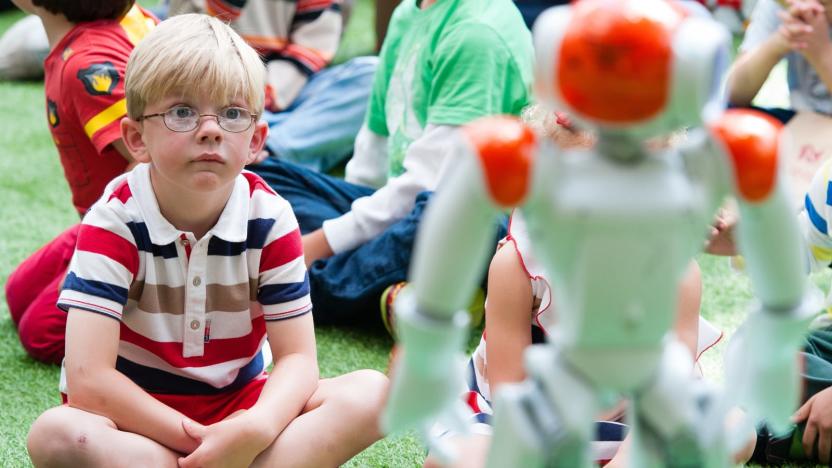
UK calls for a taskforce to keep AI and robots in check
While artificial intelligence (AI) and robotics are starting to play a more valuable role in people's lives, a new report states that the UK is ill-prepared for an inevitable autonomous future. The House of Commons Science and Technology Committee said today that the UK government "does not yet have a strategy" for fostering AI and robotics or properly considered the "social and ethical dilemmas" they may pose.

Google wanted to sell intelligent robot arms (but didn't)
Google (and parent company Alphabet) build a lot more hardware than fancy new smartphones and AI assistants -- it's just that a lot of it doesn't make it out of the lab. Take these advanced robotic arms, for example: Alphabet's robotics group built the arms, which were used in a research project to show how Google's software helps robots learn from each other over time. But despite their apparent usefulness, Alphabet CEO Larry Page decided to cancel plans to sell the hardware because it failed Page's "toothbrush test." As Bloomberg reports, Page only wants to ship products that could be used daily by billions of people, and these robotic arms are significantly more niche than that.

New littleBits kit finally adds Bluetooth module
Like everything else in our world, toys are getting more sophisticated and connected. LittleBits, Mthe company behind a series of Lego-like robotics kits, has a whole bunch of DIY sets. Among them is a just-launched update to its its Gizmos & Gadgets kit that includes a wireless Bluetooth Low Energy module. The kit, available today for $200, lets you communicate with or control the robots you create from your phone or tablet, via the company's new Invent app.

Parrot's latest project is a dev kit to help drones navigate indoors
French drone company Parrot has just announced the Parrot S.L.A.M.dunk, a special development kit meant to aid drones and other robots avoid obstacles while indoors.
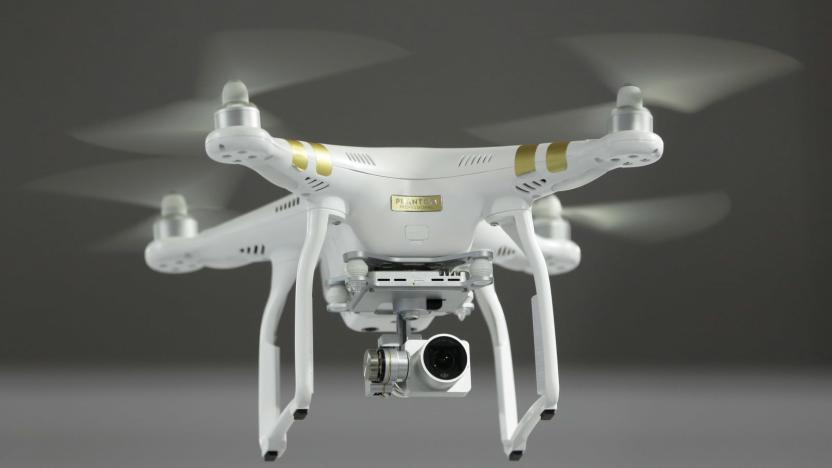
High school in Japan to offer drone and robotics course
In the latest installment of 'Japan is too cool and I wish I grew up there,' one private high school has announced a new course dedicated to drones and robotics. While the specifics are a little hazy, RocketNews24 is reporting that it's a full-time, three-year program that kicks off next April. Presumably, students won't have to take other subjects (no algebra or history? Sign me up.) It's an educational gamble, but one that could make graduates ultra-hireable for Amazon, Google and the like. Or simply well-suited for a University course that specialises in either field.

PhD student uses a robot to make VR feel more real
Between the HTC Vive and the Oculus Rift, we've come a long way towards being able to step in to virtual worlds -- but touching those false realities is a different matter. Solving this means finding a haptic technology that can adapt to needs of a constantly changing virtual environment. One PhD student's solution? Use a robot arm.















